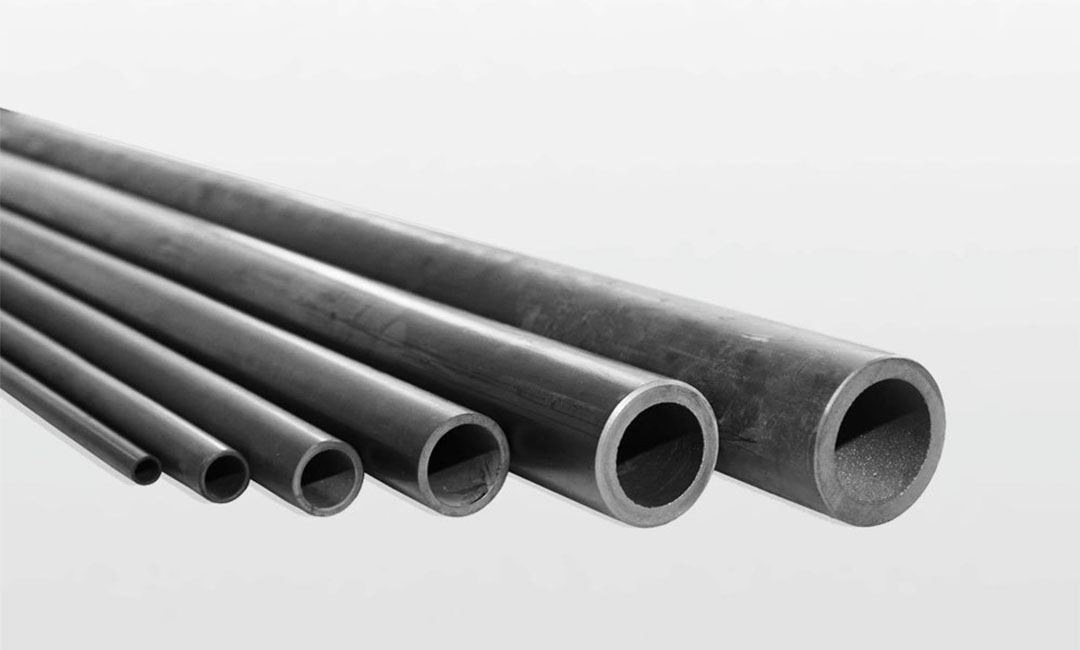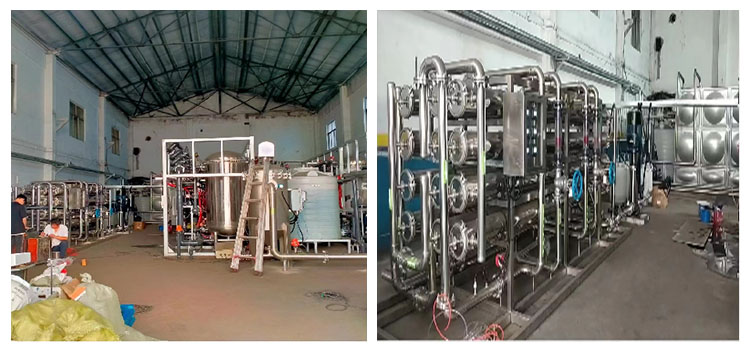Applications of Silicon Carbide Hollow Membranes in Water Treatment
Silicon carbide hollow membranes have emerged as a pivotal technology in the realm of advanced water treatment, offering a range of applications that address the growing challenges of water scarcity and pollution. These membranes, characterized by their unique structural properties and chemical resilience, are increasingly being utilized in various filtration processes, thereby enhancing the efficiency and effectiveness of water purification systems. One of the primary applications of silicon carbide hollow membranes is in the treatment of industrial wastewater. Industries such as textiles, pharmaceuticals, and food processing generate significant volumes of wastewater laden with contaminants. Traditional treatment methods often fall short in effectively removing these pollutants. However, silicon carbide membranes, with their high permeability and selectivity, can efficiently separate suspended solids, organic compounds, and even microorganisms from wastewater, leading to cleaner effluents that meet regulatory standards.
Moreover, the robustness of silicon carbide allows these membranes to withstand harsh chemical environments, making them suitable for treating wastewater that contains aggressive substances. This durability not only extends the lifespan of the membranes but also reduces maintenance costs, thereby providing a cost-effective solution for industries seeking sustainable wastewater management practices. In addition to industrial applications, silicon carbide hollow membranes are also making significant strides in municipal water treatment. As urban populations continue to grow, the demand for clean drinking water has intensified, prompting municipalities to seek innovative solutions for water purification. Silicon carbide membranes can be integrated into existing water treatment facilities to enhance the removal of pathogens, turbidity, and other contaminants. Their ability to operate effectively in a wide range of temperatures and pH levels further underscores their versatility in municipal applications.

Transitioning from municipal to decentralized water treatment systems, silicon carbide hollow membranes are proving invaluable in rural and remote areas where access to clean water is limited. These membranes can be employed in portable filtration units, enabling communities to treat local water sources effectively. By utilizing solar energy or other renewable resources, these systems can operate independently, providing a sustainable solution for water purification in off-grid locations. Furthermore, the application of silicon carbide membranes extends to desalination processes, where they play a crucial role in the removal of salts and other dissolved solids from seawater. As the global demand for freshwater continues to rise, desalination has become an increasingly viable option. Silicon carbide membranes, with their high salt rejection rates and fouling resistance, are well-suited for this purpose, offering a more energy-efficient alternative to traditional reverse osmosis systems.

In addition to their role in desalination, these membranes can also be utilized in the treatment of brackish water, further expanding their applicability in diverse water sources. As the technology continues to evolve, researchers are exploring the potential of silicon carbide hollow membranes in emerging fields such as aquaculture and food processing. In aquaculture, for instance, these membranes can be employed to maintain water quality by removing excess nutrients and pathogens, thereby promoting healthier aquatic environments. Similarly, in food processing, they can be used to clarify juices and other liquids, enhancing product quality while minimizing waste.
In conclusion, the applications of silicon carbide hollow membranes in water treatment are vast and varied, addressing critical needs across industrial, municipal, and decentralized systems. Their unique properties not only enhance the efficiency of filtration processes but also contribute to sustainable water management practices. As the world grapples with water-related challenges, the continued development and implementation of silicon carbide membrane technology will undoubtedly play a crucial role in ensuring access to clean and safe water for future generations.
Advantages of Silicon Carbide Hollow Membranes Over Traditional Filtration Methods
Silicon carbide hollow membranes represent a significant advancement in the field of filtration technology, offering numerous advantages over traditional filtration methods. One of the most notable benefits of these membranes is their exceptional mechanical strength and thermal stability. Unlike conventional materials, which may degrade under extreme conditions, silicon carbide can withstand high temperatures and harsh chemical environments. This resilience not only extends the lifespan of the filtration system but also reduces the frequency of maintenance and replacement, leading to lower operational costs over time.
Moreover, the unique structure of silicon carbide hollow membranes allows for a high surface area-to-volume ratio, which enhances their filtration efficiency. This characteristic enables the membranes to effectively separate particles and contaminants from liquids and gases, achieving higher purity levels than traditional filtration methods. As a result, industries that require stringent quality control, such as pharmaceuticals and food processing, can benefit significantly from the superior performance of silicon carbide membranes. The ability to achieve finer filtration also opens up new possibilities for applications that were previously unattainable with conventional filters.
In addition to their mechanical and structural advantages, silicon carbide hollow membranes exhibit excellent chemical resistance. This property is particularly important in industries that deal with corrosive substances, as traditional filters often succumb to chemical attack, leading to compromised filtration performance. Silicon carbide’s inert nature ensures that it remains unaffected by a wide range of chemicals, thereby maintaining its integrity and functionality over extended periods. Consequently, this durability translates into increased reliability and safety in various industrial processes.
Another compelling advantage of silicon carbide hollow membranes is their energy efficiency. Traditional filtration methods often require significant energy input, particularly in processes involving pressure-driven filtration. In contrast, silicon carbide membranes can operate effectively at lower pressures, which not only reduces energy consumption but also minimizes the overall environmental impact of the filtration process. This energy efficiency is particularly beneficial in large-scale applications, where even small reductions in energy use can lead to substantial cost savings and a lower carbon footprint.
Furthermore, the scalability of silicon carbide hollow membranes is a crucial factor that enhances their appeal in various industries. These membranes can be manufactured in different sizes and configurations, allowing for customization to meet specific filtration needs. This adaptability makes them suitable for a wide range of applications, from small-scale laboratory settings to large industrial operations. As industries continue to evolve and demand more efficient filtration solutions, the versatility of silicon carbide membranes positions them as a key technology in advanced filtration.
In conclusion, the advantages of silicon carbide hollow membranes over traditional filtration methods are manifold. Their mechanical strength, thermal stability, high filtration efficiency, chemical resistance, energy efficiency, and scalability make them an attractive option for a variety of applications. As industries increasingly prioritize sustainability and performance, the adoption of silicon carbide membranes is likely to grow, paving the way for innovations in filtration technology. By embracing these advanced materials, industries can not only enhance their operational efficiency but also contribute to a more sustainable future. The transition to silicon carbide hollow membranes signifies a pivotal shift in filtration technology, one that promises to redefine standards and expectations across multiple sectors.
Future Trends in Silicon Carbide Hollow Membrane Technology for Industrial Use
As industries increasingly seek efficient and sustainable solutions for filtration processes, the future of silicon carbide hollow membranes appears promising. These advanced materials, known for their exceptional thermal and chemical stability, are poised to revolutionize various sectors, including water treatment, food and beverage processing, and pharmaceuticals. The unique properties of silicon carbide, such as its high permeability and mechanical strength, make it an ideal candidate for applications requiring rigorous filtration standards. Consequently, ongoing research and development efforts are focused on enhancing the performance and scalability of these membranes.
One of the most significant trends in the development of silicon carbide hollow membranes is the integration of nanotechnology. By incorporating nanomaterials into the membrane structure, researchers aim to improve filtration efficiency and selectivity. This approach not only enhances the membranes’ ability to remove contaminants but also reduces fouling, a common challenge in filtration processes. As a result, industries can expect longer operational lifetimes and lower maintenance costs, making silicon carbide hollow membranes an economically viable option for large-scale applications.
Moreover, the trend towards sustainability is driving innovation in membrane technology. As environmental regulations become more stringent, industries are compelled to adopt greener practices. Silicon carbide hollow membranes, with their ability to withstand harsh conditions and their potential for reusability, align well with these sustainability goals. Future developments may focus on creating membranes that can be easily cleaned and regenerated, further minimizing waste and resource consumption. This shift not only benefits the environment but also enhances the overall efficiency of industrial processes.
In addition to sustainability, the demand for multifunctional membranes is on the rise. Industries are increasingly looking for filtration solutions that can perform multiple tasks simultaneously, such as separation, purification, and even catalysis. Silicon carbide hollow membranes are well-positioned to meet this demand due to their versatile nature. Researchers are exploring ways to modify the surface properties of these membranes, enabling them to target specific contaminants or facilitate chemical reactions. This multifunctionality could lead to significant advancements in sectors such as wastewater treatment, where the simultaneous removal of various pollutants is crucial.
Furthermore, the advancement of manufacturing techniques is expected to play a pivotal role in the future of silicon carbide hollow membranes. Traditional fabrication methods can be time-consuming and costly, limiting the widespread adoption of these technologies. However, innovations such as 3D printing and advanced sintering techniques are emerging as viable alternatives. These methods not only reduce production costs but also allow for greater customization of membrane properties, catering to the specific needs of different industries. As these manufacturing processes become more refined, the scalability of silicon carbide hollow membranes will likely improve, making them accessible to a broader range of applications.
Finally, the increasing collaboration between academia and industry is fostering a conducive environment for the advancement of silicon carbide hollow membrane technology. By pooling resources and expertise, researchers and industrial partners can accelerate the development of new materials and applications. This synergy is essential for addressing the complex challenges faced by various sectors, ensuring that silicon carbide hollow membranes remain at the forefront of filtration technology.
In conclusion, the future of silicon carbide hollow membranes in industrial applications is bright, driven by trends in nanotechnology, sustainability, multifunctionality, advanced manufacturing, and collaborative research. As these developments unfold, industries can anticipate significant improvements in filtration efficiency, cost-effectiveness, and environmental impact, solidifying silicon carbide hollow membranes as a key technology in advanced filtration systems.

